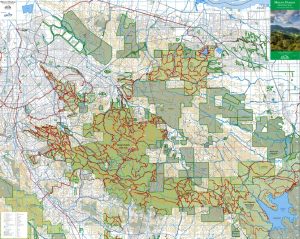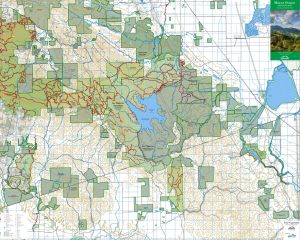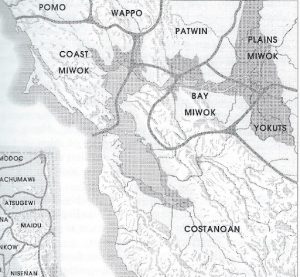Tag: east bay
Preserving Spaces and Stories with Save Mount Diablo
by Samantha Ready
Samantha Ready is an Undergraduate Research Apprentice at the Oral History Center. She worked with Shanna Farrell and Amanda Tewes during the Spring ’21 semester to help them prepare for their upcoming oral history project celebrating Save Mount Diablo’s 50th anniversary.
From Samantha: My name is Samantha Ready (she/her) and I’m from Little Rock, Arkansas. I am currently a third-year at Cal double majoring in Ethnic Studies and Geography with a minor in Race and the Law. Some of my favorite pastimes are hiking, traveling, and listening to Johnny Cash.

This semester, I had the privilege of joining the Oral History Center’s Save Mount Diablo Project as a background researcher under the mentorship of Shanna Farrell and Amanda Tewes. Despite growing up in the ‘Natural State’ of Arkansas, I didn’t learn much about environmental preservation. Coming into this research project, my personal definition of preservation was limited to the scope of society and culture. I’ve focused my studies on supporting and amplifying the perspective of marginalized communities, because they are often overshadowed by dominating narratives. Working on this project taught me about two important things that were missing from my definition of cultural preservation: land conservation and oral histories. Because I learned about the deeply rooted connections between environmental preservation and personal narratives, I now see clearly how important these facets are to the preservation of cultures and histories from all voices.
Save Mount Diablo (SMD) is a nationally accredited land trust organization and has been working to conserve the land around Mount Diablo in the East Bay since 1971. The preservation of natural land is a main goal of SMD, and has thus far been achieved through consistent advocacy, dedicated stewardship, thoughtful land-use planning, and educational programs. Mount Diablo’s biodiversity, historical and agricultural significance, and natural beauty are important to both the area’s general quality of life and natural resources. SMD works to provide ways for people to interact with the environment at Mount Diablo through recreational opportunities that consistently protect the region’s natural resources and open spaces, such as their Discover Diablo public hiking program, educational classes with local schools, and the annual Four Days Diablo backpacking trip through the mountain. Below are two maps of 2020 The Mount Diablo Regional Trail Map, which both feature the Diablo Trail that spans across the entire regional area. Of the 338,000 total acres shown between both maps, more than 120,000 acres have been preserved and protected thanks to Save Mount Diablo. Seth Adams, SMD’s Land Conservation Director, says that “No other map shows all of the Diablo area parks in a unified design and in regional context. The map illustrates what has been accomplished and what private lands still need to be protected.” (SMD website) The first map features Mount Diablo State Park and surrounding parks, and the second features Los Vaqueros and surrounding parks.
Mount Diablo & Surrounding Parks:

Los Vaqueros & Surrounding Parks:

Image Credits: maps produced by Save Mount Diablo
In my research about Save Mount Diablo, it became apparent that working alongside surrounding community members -including SMD membershipSMD membership, various outside organizations, and political leaders/institutions- has been vital to maintaining their mission of preserving the environment. My first point of interest here was learning more about which communities and organizations SMD has worked with, how, and why. I immediately thought of Indigenous communities connected with Mount Diablo. Bev Ortiz, a Native American historian and SMD newsletter contributing author, wrote an article entitled “Mount Diablo as Myth and Reality: An Indian History Convoluted,“ in which she describes the mountain’s cultural and religious significance to Native Nations. Mount Diablo is meaningful for the Nations of the Miwok, Maidu (Nisenan), Ohlone (Chochenyo), Pomo, and Wintun Nations. Ortiz connected with members from these Native Nations in her work of preserving their cultural connections with Mount Diablo, from whom she learned about these connections, which included creation stories of several Nations. Creation stories are the original forms of oral history, and have helped preserve Indigenous cultures for thousands of years. Below is a map by Mount Diablo State Park of languages spoken by Native Americans from the region of Mount Diablo.

Image Credit: Mount Diablo State Park
Save Mount Diablo has often recognized Native cultural connections with Mount Diablo throughout its efforts to protect the mountain, such as in SMD Director of Land Programs Seth Adams’ timeline of the History of Mount Diablo, SMD’s stance to protect Tesla Park, and SMD Executive Director Ted Clement’s event to discuss SMD’s work with Indigenous communities to preserve cultural resources. Native American culture strongly connects with the environment, as they were the Earth’s first caretakers and the first to sustainably manage the world’s natural resources. Indigenous Nations around the world have maintained that stewardship of their ancestral homelands would be the first step to restoring their relationship with the land after colonization. In this sense, the inclusion of Native communities in environmental preservation would also aid in the preservation of their culture(s). To me, Save Mount Diablo’s work with Native communities thus far indicates their sincere recognition of how important the preservation of Native connections with Mount Diablo are to preserving the region’s land. Though there is definitely recognition, I remain curious as to the extent Indigenous communities are directly involved in SMD’s stewardship and conservation of Mount Diablo lands.
Another part of the community Save Mount Diablo works within is the political sphere. SMD has been heavily involved in, or at least taken stances on, several ballot measures throughout its50 years of fighting for environmental preservation. SMD also spends a lot of time tracking proposals by potential developers to ensure they follow the environmental rules and protections set by the California Environmental Quality Act (CEQA) of 1970. The main purpose of CEQA is to prevent and decrease environmental damage by developments and to allow a public decision-making process, which enables community members to discuss their concerns regarding development projects’s environmental effects. This work has led to SMD’s working with local political leaders and alliances with conservation networks in order to defend Urban Limit Lines (ULLs) against developers of preserved space in the Mount Diablo region. These ULLs preserve and protect open spaces, and are often threatened by developers, corporations, and some politicians. In their encouragement of public engagement with these issues, SMD provides email templates to send to local and state political leaders about issues at hand. Save Mount Diablo has been successful in these political methods of environmental preservation largely due to their active involvement and communication with outside persons, organizations, and institutions. Through its years of interactions with political representatives, public organizations, and parks districts, I wonder how, if at all, SMD’s standing as a private organization has affected the outcomes of these interactions. Additionally, I’m curious about how situational outside influences affected these interactions.

Image Credit: EnvironmentalScience.org
When learning about stories of the past, even those of organizations like Save Mount Diablo, it’s important to think about the perspective from which the story is being told. Learning about oral history played a big role in helping me realize that because of its practice to amplify and preserve individual voices so as to learn about their personal and lived experiences of historical occurrences. UC Berkeley’s Oral History Center (OHC) continues this mission across a variety of projects, including in this Save Mount Diablo Project. An ultimate goal of the SMD oral histories is to understand how the organization promotes a thoughtful relationship between people and the environment to inspire positive growth for the natural land and society as a whole. The background research I was able to contribute this semester barely scratched the surface of this story, and the rest lies in the stories soon to be told in the oral histories of Save Mount Diablo.
Learning about notable contributions of Save Mount Diablo to land conservation and environmental preservation taught me about how intersectional preservation is with most, if not all, facets of life. Not only do they work to conserve land that is sacred both biologically and culturally, SMD consistently provides recreational and educational resources for teaching and learning about the environment and the importance of preserving it. Now, it’s time for the preservation of Save Mount Diablo’s stories.